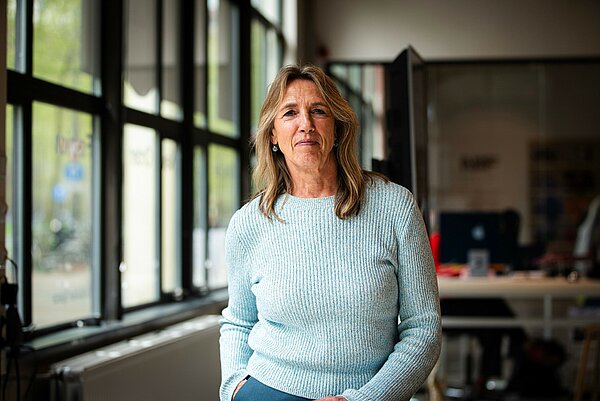World Design Embassies

‘Making an impact on social issues with design power’
How do we become an inclusive society, how do we keep water clean and available, how do we keep the earth liveable and how do we make our economy more sustainable? Within Dutch Design Foundation, design power has been deployed for several years in addressing societal challenges. The aim is to look at these big issues ‘differently’. And it works!

The fresh perspective of creative designers. Perhaps that is precisely what is still needed to tackle issues that we as a society have been struggling with for a long time. With funding from the Regio Deal Brainport Eindhoven, various programmes have been set up under the banner of Dutch Design Foundation. Programmes in which the connection is made between the design power of designers and government and industry. Martijn Paulen, director Dutch Design Foundation and Marianne Aarnoudse, as Head of Design Works responsible for programmes such as the What if Lab and the World Design Embassies, are happy to tell us about them with infectious enthusiasm.
Consequence of DDW
Dutch Design Foundation's initiatives are actually a more or less logical consequence of the success of Dutch Design Week, which this year sees its 24th edition. ‘During DDWs, there were soon requests from the business community and the government for cooperation,’ says Martijn. 'Initially, as an organisation, you then refer to designers and design agencies you know, but over the years more and more, more extensive and more complex requests came in. We noticed that, among both companies and designers, there was a need for some form of guidance in the process of collaboration. We jumped on that.'

Guiding both sides
‘It turned out to be very important to guide both sides,’ Marianne states. 'How do we get a company's exact question clear, how do you structure the cooperation, which processes do you have to go through together? A good example is the question from an energy supplier. It was looking for ways to reuse written-off wind turbines. Designers look at this in a very different way from the builders and users of those devices. From our What if Lab, we linked designers to this organisation and guided the process. This brought together two worlds that potentially do not have much in common. The result? That all kinds of new initiatives were set in motion; from the development of tiny houses (from the turbines) to floating platforms (from the blades).'

Coalitions around social themes
Working from individual questions from organisations, with the establishment of a number of World Design Embassies, the Labs form coalitions around societal themes. Marianne: ‘One of the examples is the Embassy of Health. Health care is a comprehensive and also complex subject. Especially because it involves many parties and divided ownership. In the embassies, we are the director. We bring the relevant parties together and connect them with designers in order to jointly develop new perspectives on certain themes. Pioneering? Yes, it certainly was in the beginning, but we now notice that more and more people see that together you can have much more impact on these complex themes. We facilitate collaboration. We create a place to think in an open innovation coalition, go through processes and experiment with each other. How are we as a society going to take the next step when it comes to water, safety, food or, for example, circular building.'
Making ourselves redundant
That design power will play an increasingly important role in social transitions is by now clear. It was even literally in the previous cabinet's coalition agreement. ‘But we are now also seeing the concrete results more and more often,’ say Marianne and Martijn. 'The new design for Eindhoven's Spoorzone, Dutch Mountains, will be a wooden, bio-based building whose basis is partly based on initiatives by Dutch Design Foundation and designers that have been collaborated with. Design power and creativity have been added to an originally conservative building world. Cooperation, synergy and daring to think outside the box; it can lead to surprising and future-oriented solutions. We have already proven that.' And how do they think about their own future? 'Maybe we can make ourselves redundant in the coming years. Maybe by then the design world will have penetrated the capillaries of the more traditional markets and we will better realise that this different way of thinking and looking at things is necessary to meet societal challenges. That would be nice, yes. But we are not that far yet, in my opinion.'
